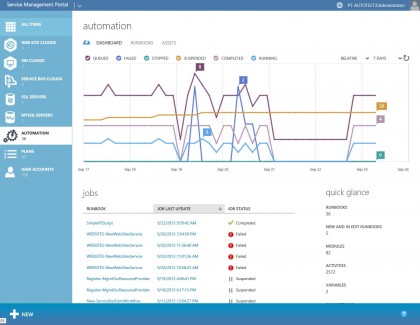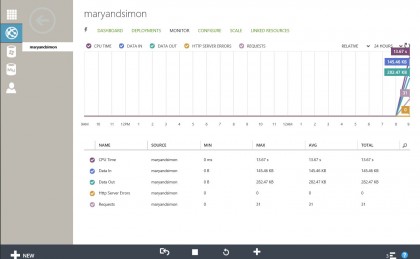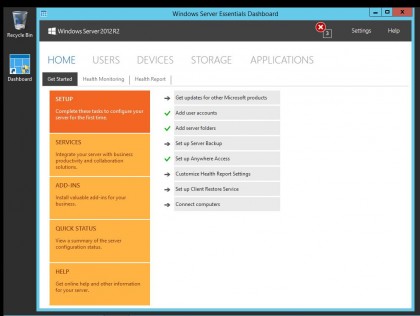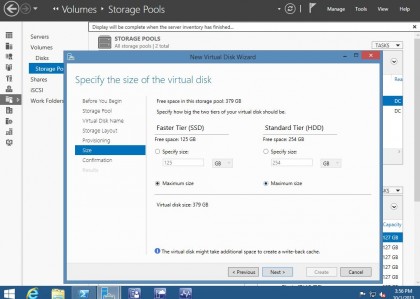What's in Windows Server 2012 R2 for small businesses
All that R2 can bring to your biz

When you log in to an app using Workplace Join, the sign-in screen looks like the Azure or Ofice 365 sign-in screen – because the connection happens through Azure.
If you want to make it easier for employees to log into Office 365 and Salesforce and other cloud services using the same accounts they use to sign in to Windows, you can use the free Azure Active Directory service to set up single sign on for specific people for specific apps. You can even hide the details of the cloud logins – so you can let people sign in to your company Twitter account but they won't be able to take the password with them and embarrass you in public if you sack them.

If you want to make employees use their smartphone to prove they're the person logging into your network or using your apps over the Web, you can use Microsoft's new multi-factor authentication tool with your own Active Directory; make people accept a phone call to the number listed in AD or type in a code they get by text message. You don't have to run that in Azure or pay extra for it, but you do have to get it from the Azure site. Slowly but surely, Microsoft is bringing Windows Server and Azure closer together, mostly in ways that make sense.
Microsoft is also bringing System Center (and Intune) and Windows Server closer together; especially if you're looking after a larger network or you want to manage PCs, phones and tablets in the same way – sending out certificates and VPN connections or creating a company portal that lets you offer apps for iOS, Android, Windows Phone and Windows 8.1 users in the same place - you'll need System Center as well as Windows Server 2012 R2. For smaller businesses the Server Manager interface is enough to manage everything from storage spaces to work folders, although you still also have to use almost a dozen extra tools for specific features like managing virtual machines.
If you only have a few users and devices, the Server Essentials version of Windows Server 2012 R2 has far more features in the dashboard interface, including better file history integration for Windows 8, the option to back up the server to Windows Azure, management tools for phones and tablets that let you force users to set a PIN or remote wipe lost devices and a simple wizard for creating storage spaces. You can create Office 365 users straight from the dashboard or use security and distribution groups to organise users.

That's more useful if you're virtualising Server Essentials (a new option in this release). You can run Server Essentials as a virtual machine on Server Essentials itself (so if your server hardware ever fails, you can just move it onto new hardware from your backup and carry on from exactly the same point) but you can't use any other VMs at the same time. If you need to run more than one virtual machine, you can now run Server Essentials as a role on the standard version of Windows Server to get the simple dashboard; that lets you have to 100 users, when you'll definitely want groups.
What is a R2 release?
Windows Server alternates 'year' releases like 2012 with R2 updates. We asked principal program manager Jeff Woolsey what the difference is. "The way we think about R2 is that we're going to keep the kernel changes to a minimum and we're going to be very surgical about that. We will include new code, but we won't make wholesale changes to the kernel." That means you get new features (like storage spaces that mix SSDs with standard hard drives and automatically put your most frequently accessed files on the SSD).
Are you a pro? Subscribe to our newsletter
Sign up to the TechRadar Pro newsletter to get all the top news, opinion, features and guidance your business needs to succeed!

Plus an R2 version doesn't cost quite as much as a version where the year changes. The big saving is that if you have client access licences for Server 2012 features, you don't need to buy more CALs. And if you buy Windows Server on a volume licence (which even small businesses can do), the upgrade is free; otherwise Windows Server 2012 R2 Standard and Essentials are both the same price as Server 2012. If pulling in more cloud features and giving your users more mobile options fits what your business needs, R2 is a logical upgrade, when your budget and schedule allow.
- Hands on reviews of the Surface 2 and Surface Pro 2 are ready for you right now.
Mary (Twitter, Google+, website) started her career at Future Publishing, saw the AOL meltdown first hand the first time around when she ran the AOL UK computing channel, and she's been a freelance tech writer for over a decade. She's used every version of Windows and Office released, and every smartphone too, but she's still looking for the perfect tablet. Yes, she really does have USB earrings.